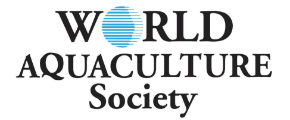CAPTURE OF INFECTIOUS OSTREID HERPESVIRUS FROM Crassostrea gigas USING ANIONIC POLYMER-COATED MAGNETIC BEADS
Ostreid herpesvirus-1 (OsHV-1) has been involved in massive mortality outbreaks of Pacific Crassostrea gigas (Pacific oysters) throughout the world, causing important economic losses to aquaculture. Therefore, rapid virus isolation/purification and detection systems are highly needed to provide early warnings as well as for research activities. In this work, magnetic beads (MBs) coated with an anionic polymer were used to efficiently capture infectious OsHV-1 through electrostatic interactions (Fig 1). MBs were incubated with two types of matrix (oyster homogenate and seawater) prepared using naturally infected oysters collected from Fangar Bay (NW Mediterranean Sea). MB-virus conjugates were then thoroughly washed by the application of a magnetic field. Quantitative PCR (qPCR) of the conjugates demonstrated the adsorption of the virus on the MBs from both oyster homogenate and seawater. Calibration curves were constructed using virus and MB dilutions.
To study the infectivity ability of the virus captured by the MBs, MB-virus conjugates (from both oyster homogenate and seawater) were injected into naïve spat oysters, using oyster homogenate and seawater with no MBs as positive controls, as well as MBs with no virus and only water as negative controls. Mortalities were observed when MB-virus conjugates were injected as well as in the positive controls, and no mortalities were recorded in the negative controls. Furthermore, subsequent OsHV-1 DNA and RNA analysis of the oysters by qPCR and RT-qPCR, respectively, confirmed the ability of the beads to capture infectious virus, and the virus being the responsible for the mortality event. The capture of infectious OsHV-1 using MBs is a promising tool, which can be applied as a rapid virus isolation/purification system or, combined with qPCR, as a method for virus detection in aquaculture facilities.
Acknowledgments: The research leading to these results has received funding from the European Union's H2020 Framework Programme under grant agreement no 678589 (VIVALDI project).










